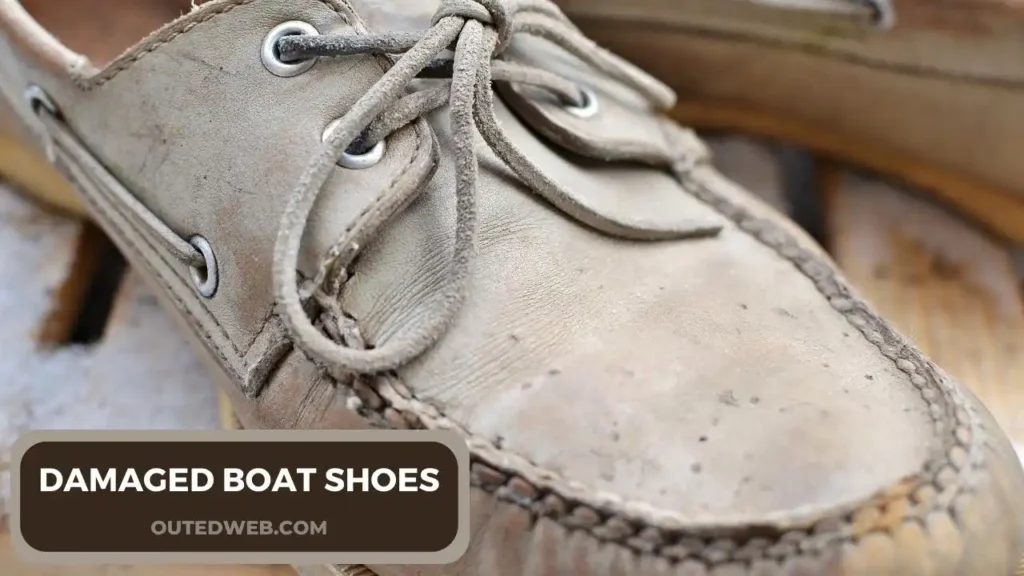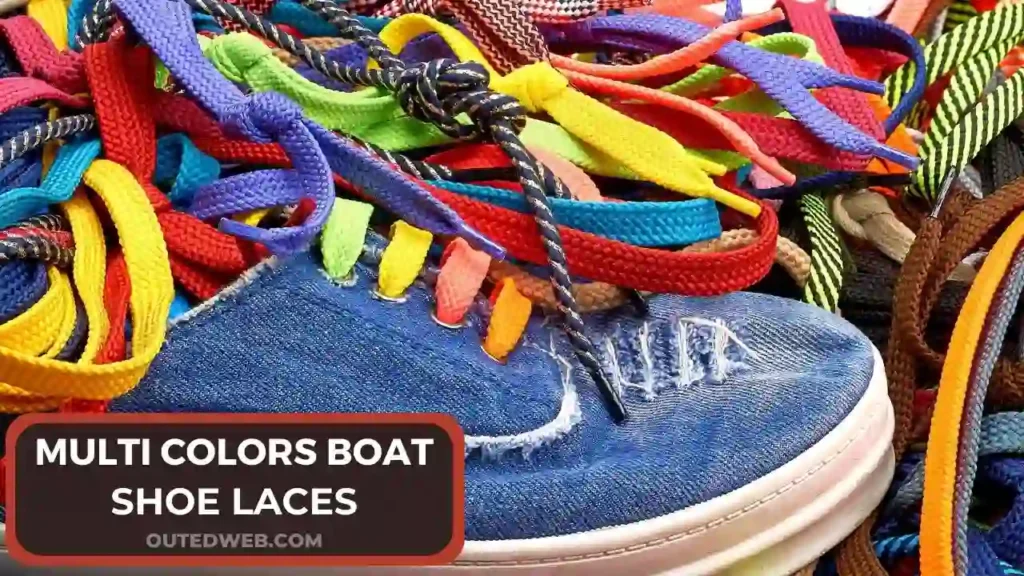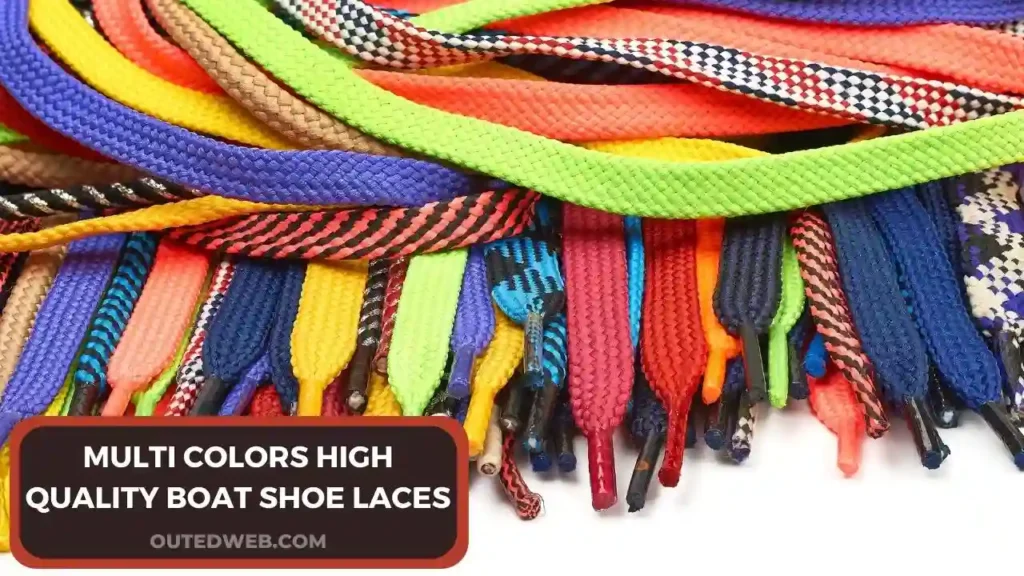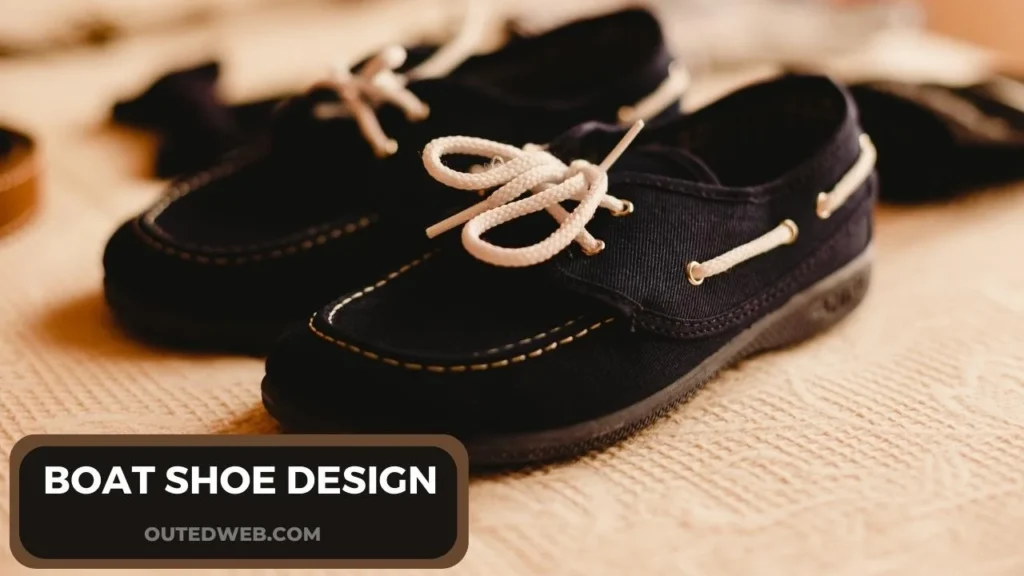You’ve just acquired a stylish pair of boat shoes and are eager to show them off on your next sailing adventure. As you sit on the dock, you realize you’re uncertain how to tie your new shoes properly. Fret not, for we have the answer to your dilemma!
To begin, ensure you have enough lace length to wrap around your foot comfortably. Too much excess lace can lead to tripping hazards, while too little may result in a loose fit.
Now, cross the left lace over the right, forming an “X.” Then, pass the left lace under the right and pull both ends tight. This creates a secure base for your boat shoe knot.
But wait, there’s more! Follow a few more steps to perfect your boat shoe knot and ensure utmost stability. Join us in this guide as we delve deeper into the art of tying boat shoes, guaranteeing a worry-free maritime experience like never before.
Read Related Articles:
Why Properly Tying Boat Shoe Matters
When it’s time to tie boat shoes, it may seem like a mundane task that doesn’t require much attention. After all, they’re just shoes designed for life on a boat, right? However, the importance of properly tying boat shoes should not be underestimated. Let’s find out the reasons:
Safety on Deck: Prevent Accidents with Secure Knots
Imagine yourself on a boat, navigating choppy waters, or maneuvering around a slippery deck. The last thing you want is your boat shoes slipping off or your laces coming undone.
Properly tying boat shoes with secure knots ensures that your shoes stay firmly in place, minimizing the risk of accidents or injuries. Whether walking on a wet deck or climbing the rigging, securely tied boat shoes provide stability and grip needed to maintain your balance.
Comfort and Support: The Right Fit Matters
Aside from safety, tying boat shoes correctly is crucial for comfort and support. When tied properly, boat shoes conform snugly to your feet, providing the necessary support for long hours on the water.
Loosely tied laces can cause your feet to slide around inside the shoes, leading to blisters, hotspots, and discomfort. By tying your boat shoes correctly, you ensure a secure fit that keeps your feet comfortable and supported, allowing you to focus on enjoying your time on the water.
Maintaining a Polished Look: Style with Confidence
Boat shoes have become synonymous with a classic and timeless nautical style. Whether on a yacht, strolling along the beach, or attending a casual gathering, properly tied boat shoes elevate your overall look.
Loose and messy laces not only undermine the aesthetic appeal of boat shoes but also create a haphazard and unkempt appearance. By mastering the art of tying boat shoes, you can confidently showcase a polished and put-together style that complements your outfit and leaves a lasting impression.
Enhancing Durability: Protecting Your Investment
Boat shoes, especially high-quality ones like Sperry’s Authentic Originals, are an investment worth protecting. Properly tying boat shoes ensures the laces are secured, preventing unnecessary wear and tear.

Loose laces can catch on objects, fray, or become tangled, potentially damaging the laces or the eyelets of the shoes. By tying boat shoes correctly, you extend the lifespan of both the shoes and the laces, preserving their durability and maintaining their overall quality.
What Are The Essential Knots for Tying Boat Shoes?
The laces are kept in place securely by a well-tied knot, offering the required support, comfort, and style. Let’s examine the traits and distinctive qualities of the widely used knots.
Barrel Knot:
The barrel knot, also known as the heaving knot, is a classic knot that brings a touch of elegance to your boat shoes. It features a wrapped loop that adds a stylish twist to your lacing. It is secure, ensuring your laces stay in place even during vigorous activities.
Reef Knot:
The reef knot, also referred to as a square knot, is a reliable and straightforward knot that provides a secure fastening for your boat shoes. It involves crossing the laces over each other and tying them tightly, creating a knot that is easy to tie and untie. The reef knot is known for its symmetry and stability, making it an excellent choice for keeping your boat shoes snug and secure.
Chain Knot:
Consider the chain knot for tying your boat shoes for a unique and eye-catching look. This knot involves creating a series of loops and interweaving them together, resembling a chain. The chain knot adds a touch of intricacy to your lacing, making it a great choice for those seeking a distinctive and stylish appearance.
Tassel Knot:
A tassel knot is a perfect option to add a playful and decorative element to your boat shoe lacing. This knot involves creating loops and tying them together to form tassels at the end of your laces.
It adds visual interest and prevents your laces from fraying or getting tangled. It’s a fun and creative way to personalize your boat shoe style.

Fishtail Knot:
The fishtail knot is a versatile and practical option for tying boat shoes. It involves crossing the laces diagonally and weaving them through the eyelets, creating a secure and neat pattern that resembles a fishtail. This knot not only provides a snug fit but also adds an element of visual appeal to your boat shoe lacing.
Surgeon’s Knot:
The surgeon’s knot is a reliable choice if you’re looking for an extra secure knot. This knot involves tying a double knot by making an additional loop before completing the standard knot.
The surgeon’s knot provides extra security, ensuring your laces stay firmly in place, even during rigorous activities. It’s a knot commonly used in surgical procedures due to its strength and stability.
Choosing the Right Knot for You
When deciding which knot to use for your boat shoes, consider personal preference, style, and shoes you own. Each knot offers its own unique characteristics and aesthetic appeal. Experiment with different knots to find the one that suits your style and provides the desired level of security and comfort.
Step-by-Step Guide: Tying Boat Shoes with Precision
It’s time to dig into instructions on how to tie boat shoes precisely now that you know of your best knot possibilities. Following these instructions ensures a snug and secure fit every time you slip on your boat shoes.
Step 1: Start with the Right Amount of Lace
Before tying your boat shoes, ensure you have enough lace length to work with. It’s important not to have too little or too much lace, as it can affect the overall fit and appearance. Aim for an even length of lace on both sides, allowing enough excess to tie the desired knot securely.
Step 2: Cross and Create the First Loop
Cross the left lace over the right lace to create an “X” shape. Ensure that the crossover point is close to the shoe’s top. Make a loop on the left side by bringing the left lace under the right lace.
Step 3: Cross and Loop the Right Lace
Repeat the “X” shape by crossing the right lace over the left lace. To make a loop on the right side, tuck the right lace beneath the left lace. At this point, the shoe should have two loops—one on each side.
Step 4: Thread and Tighten the Knot
Throw the left lace through the loop on the right side. Similarly, thread the right lace through the loop on the left side. Pull both ends of the laces simultaneously to tighten the knot securely. Ensure the knot is snug but not too tight, allowing for comfortable movement.
Step 5: Create a Second Knot (Optional)
You may create a second knot for added security and stability. This step will be especially helpful if you intend to participate in strenuous activities like boating or hiking. As previously, cross the laces to form loops, thread the laces through the loops to tighten the knot, and repeat.
Step 6: Adjust and Fine-Tune the Fit
Once the knot is secure, take a moment to adjust and fine-tune the fit of your boat shoes. Ensure that the laces are evenly tightened across the shoe, providing a balanced and comfortable feel. You can make minor adjustments by pulling or loosening the laces as needed until you achieve the desired fit.
Step 7: Finishing Touches and Styling Options
With your boat shoes securely tied, you can now focus on the finishing touches and explore various styling options.
You can tuck the extra lace into the shoe for a neat look, or you can use lace clips or aglets to hold it in place.
Alternatively, you can let the laces dangle loosely or tie a bow with them at the top of the shoe if you favor a more laid-back and casual look.
Expert Tips and Tricks for Tying Boat Shoes
After perfecting the technique for tying boat shoes, let’s examine some professional guidance and tips to improve your experience and guarantee long-lasting durability. With the aid of these tips, you’ll be able to get the most use out of your boat shoes and keep up their spotless appearance.
Use Quality Laces
Investing in high-quality laces is crucial for tying boat shoes effectively. Look for laces made from durable materials like leather or nylon, as they will withstand the rigors of boating and outdoor activities. Opt for laces that are long enough to tie your preferred knot without feeling restricted but not excessively long to avoid tripping hazards.

Practice the Knots
Practice different knot techniques regularly to become a true expert in tying boat shoes. Experiment with the barrel knot, reef knot, chain knot, tassel knot, fishtail knot, and surgeon’s knot. Each knot offers unique benefits, so having a repertoire of knot-tying skills will allow you to adapt to different situations and styles.
Double-Check the Tightness
Before you embark on your boating adventure or head out for a casual stroll, double-check the tightness of your knot. Over time, laces may loosen due to movement and friction. Take a moment to ensure the knot is secure and snug, providing optimal support and comfort throughout the day.
Consider Insoles or Inserts
If you find that your boat shoes lack sufficient arch support or cushioning, consider using insoles or inserts. These additional accessories can enhance comfort, reduce fatigue, and provide extra stability during extended wear.
Choose insoles designed specifically for boat shoes, as they offer moisture-wicking properties to keep your feet dry in wet conditions.
Personalize Your Style: Exploring Different Lacing Patterns
Boat shoe tying provides an opportunity to express your individual flair in addition to being utilitarian. We’ll now look at various lacing styles that can improve the appearance of your boat shoes.
There is a lacing pattern to fit your taste, whether you choose a traditional and uncluttered appearance or a more complex and distinctive design.
Straight Bar Lacing:
The straight bar lacing pattern is a classic, straightforward option that gives your boat shoes a clean and polished look. Start by inserting the lace through the bottom eyelets and bring both ends up vertically.
Cross the ends over and insert them into the next set of eyelets, continuing until you reach the top. This pattern creates parallel lines and keeps the laces snugly in place.
Diagonal Lacing:
Consider the diagonal lacing pattern for a subtle twist on the straight bar lacing. Instead of crossing the laces over vertically, angle them diagonally as you move up the shoe. This pattern adds a touch of visual interest to your boat shoes and can create a more dynamic and stylish look.
Crisscross Lacing:
A crisscross lacing pattern is a fantastic option for boat shoes to give them a little pizzazz. As with the diagonal lacing pattern, begin by diagonally crossing the lace ends.
However, instead of going straight up the shoe, cross the laces over each other as you move up. This pattern creates a distinctive crisscross effect that stands out and adds a touch of personality to your boat shoes.
Checkerboard Lacing:
For a bold and eye-catching lacing pattern, consider the checkerboard lacing. This pattern involves weaving the laces crisscrossing to create a checkerboard-like design.
Start by crossing the laces over each other diagonally and then weave them through the adjacent eyelets to form the checkerboard pattern. This lacing style will make a statement and set your boat shoes apart from the crowd.
Custom Patterns:
Once you’ve mastered the fundamental lacing patterns, don’t be afraid to experiment with your designs. Mix and mix lacing techniques, use numerous colors of laces, or weave the laces in unusual ways to create intricate designs. The options are unlimited, and you can truly customize your boat shoes to suit your style.
Why Are Boat Shoes Difficult to Tie?
There is one peculiar aspect that has often left shoe wearers perplexed—the difficulty in tying boat shoes. Despite their seemingly simple design, many individuals have struggled to master the art of securing these nautical-inspired shoes properly.
Now, we embark on an exploration to unravel the mystery behind why boat shoes can prove to be a challenging knotting endeavor.
Leather Laces: A Slippery Challenge
Regarding boat shoes, one of the key factors contributing to their difficulty in tying is the material of the laces themselves. Boat shoes, especially high-quality ones like Sperry boat shoes, often come with leather laces. Unlike the laces found in traditional shoes, leather laces have different textures and behavior.
They can come loose from regular knots more easily, causing frustration for wearers. The slipperiness of leather laces demands a different approach to achieve a secure and reliable knot.
The Nature of Boat Shoe Design
Their unique design is another factor that adds to the difficulty of tying boat shoes. Boat shoes are specifically crafted for nautical environments where traction and stability are crucial. This design features rubber soles that prevent slipping, water-resistant fabrics, and a close fit.

But the design also has an impact on how the laces are fastened. The leather laces often have to be threaded through eyelets and tightened properly to ensure a secure fit that can withstand the challenges of a boat’s deck.
Caring for Boat Shoes and Laces
Caring for boat shoes and laces ensures their longevity and enhances their overall appearance, making them a reliable and stylish choice for both land and sea adventures.
Cleaning Boat Shoes:
Regular cleaning is essential to remove dirt, grime, and salt deposits that can accumulate on your boat shoes. Here is a step-by-step procedure for cleaning your boat shoes:
- Remove the laces: Start by removing the laces from your boat shoes. This will allow you to clean the shoes thoroughly without any obstructions.
- Brush off dirt: Use a soft-bristle brush or a cloth to gently brush off any loose dirt or debris from the shoes. Pay special attention to the seams and crevices.
- Prepare a cleaning solution: Mix a small amount of mild soap or detergent with water to create a cleaning solution. Avoid using harsh chemicals or bleach, as they can damage the material.
- Spot cleaning: Dip a clean cloth or sponge into the cleaning solution and gently scrub any stained or soiled areas on the shoes. Take care not to saturate the shoes with excessive water.
- Rinse and dry: After spot cleaning, rinse the shoes with clean water to remove any soap residue. Use a dry cloth to blot away excess moisture. Allow the boots to air dry naturally, away from direct heat sources.
- Conditioning and waterproofing: Once the shoes are dry, apply a suitable leather conditioner or waterproofing spray to protect and nourish the material. For the best results, follow the package instructions.
Lacing Care:
In addition to cleaning the boat shoes themselves, paying attention to the care of the laces is essential. Here are some tips for maintaining your boat shoe laces:
- Regular inspection: Check the laces for signs of wear, fraying, or damage. Replace any significantly worn or broken laces to ensure a secure fit.
- Handwashing or machine washing: Depending on the material, you can handwash or machine wash the laces. For cotton or synthetic laces, handwashing with mild detergent and air drying is usually sufficient. Leather laces may require more delicate cleaning methods, such as wiping with a damp cloth.
- Proper storage: Store your boat shoe laces in a clean and dry place when not in use. Avoid exposing them to excessive heat or sunlight, as it can cause fading or deterioration.
Maintenance Tips:
To keep your boat shoes in top shape, consider the following maintenance tips:
- Use a shoe horn: When putting on your boat shoes, use a shoe horn to prevent excessive strain on the back of the shoes. This helps maintain their shape and prevents unnecessary stretching.
- Rotate pairs: If you frequently wear boat shoes, having multiple pairs and rotating them regularly is beneficial. This allows each pair to dry and breathe between uses, reducing the risk of odor and prolonging their lifespan.
- Store properly: When not in use, store your boat shoes in a cool and dry location. Use shoe trees or stuff them with newspaper to help maintain their shape and absorb moisture.
- Avoid exposure to water: While boat shoes are designed to withstand water, excessive exposure can still cause damage. Avoid submerging them in water for extended periods, and dry them thoroughly if they do get wet.
Final Say
Knowing how to tie boat shoes properly is functional and essential for maintaining their comfort and style. You can ensure a secure and snug fit by understanding the different knot options and following a step-by-step guide.
Additionally, exploring various lacing techniques allows you to personalize your boat shoes and add a touch of uniqueness to your style. Taking care of your boat shoes and laces through regular cleaning, proper storage, and maintenance practices will help extend their lifespan and preserve their original charm.
Remember, boat shoes are more than just footwear; they are a symbol of adventure and timeless fashion, so it’s worth investing time and effort into mastering the art of tying and caring for them. Happy boating!
Images Credit:
- Canvapro.com

